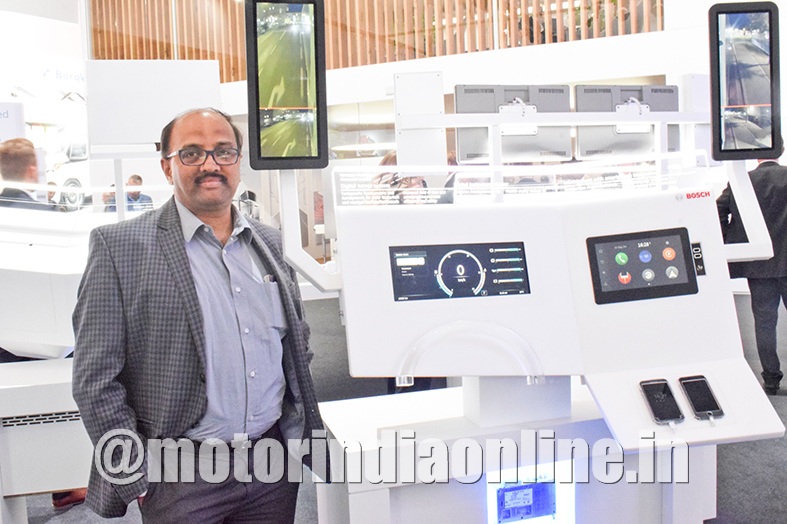TrendingNow – The aim is to picture the future truck and contextualize it in India. The alignment already exists between Bosch’s focus, which is creating electrified, connected and automated solutions and the concept on which the future truck is being built.
Mr. Sandeep N., EVP – Mobility Solutions OE Sales, talked about the three pillars of their mobility engagement: “Electrified, connected and automated are translated into a vehicle that is emission-free, accident-free and stress-free. The basic motivation for some developments in Europe is different from that of India. In Europe if it is about comfort and safety, in India it could be both but majorly impacted by cost.”

Bosch’ major focus in the European context has been in terms of connectivity, improving asset utilization, improving the tools for better fleet management, getting more intelligence into making it a seamless connectivity between the commercial vehicles with their fleets. Now automated driving like platooning is a big attraction and it is naturally so because driver availability is a major concern. The same concerns are true for India as well.
He shared: “In the context of platooning, the main framework of Bosch is the combustion engine, so we are working on improving the limitations of diesel internal combustion engines besides hybridization and electrification. It is our job to take the global features and adapt it back in India.”
TechnologyFirst – Though platooning is mainly being driven by the fleet management companies and the OEMs, Bosch is working on the software to enable it for its customers in India in the future. Mr. Sandeep added: “It is still a new concept the world over but we are working towards getting safety features enabled before it becomes a reality. I would say we are at the backdoor of platooning. Then, camera and imaging are the new things which will facilitate active driving, driver enablement, and simple things like lane departure warnings, driver drowsiness detection – basically all the fundamental things which comprise automated driving.”
IndiaCentric – Bosch’s customers in India will reap the benefit of its expertise in technologically perfect adaptations tailor-made for them. Mr. Sandeep agreed: “Connectivity and asset utilization are the real low hanging fruit for India before we go ahead with technically complex concepts. Another aspect is telematics. Though telematics is not new in India, we can still make huge enhancements by including more intelligent features in fleet utilization aspects. So we actually can modify the concept of connectivity into being connected for the purpose of getting more assets to be realised.”
What Bosch is also looking to contextualize for the Indian customer is the concept of shared mobility, especially in the sub one tonne category of commercial vehicles. Mr. Sandeep shared: “We can bring forward solutions that will have aggressive payback period besides making them cost effective. Then with BS-VI looking at a deadline of 2020, we are already engaged with OEMs to ease the path.”
Challenge – In a cost sensitive market like India, adaptation of concepts is a huge challenge. Mr. Sandeep concurred: “Any direction one takes, the first thing talked about is the payback. Bosch recognizes this and our challenge is to see how we can make it commercially more meaningful for our Indian customers but we also believe that the mindset of ‘everything in India has to be cheap because only when it is cheap it will get adapted’ will have to change.”
And it is a tightrope that Bosch is walking to break the traditional paradigm.